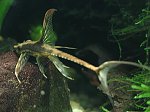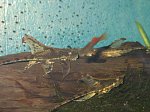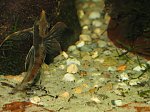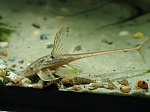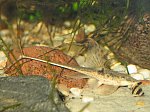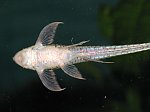Once again I come here whit questions, the day before yesterday my Sturisoma mated and well....I had some eggs.
My problem now is, I´m not sure of what sturisoma i have since they seems Aureum or Festivum, for me they seem very similar and I can´t find a way to distinguish them, I would appreciate if someone help me in this matter.
Now the eggs.... I woke up and saw both male and female in the front glass and whent to look what it was since i also saw some huge spots near them, there was 3 eggs in the glass and 10/12 on the floor and leaves.
I needed to leave (was going to get a new Cube for my shrimps) and when i arrived there was only 3/4 on the floor and the ones in the glass (other 3), Big mistake i know.....
most eggs where not fertilized and after 2/3 days they went bad and i had to remove them so that if any fungus appear it did not destroy the healthy ones.
They have born today (YEY) they are little copies from the parents hehe (photos will flow next).
so help me here what do I feed them when they lose their yok sack?
For identification:



























